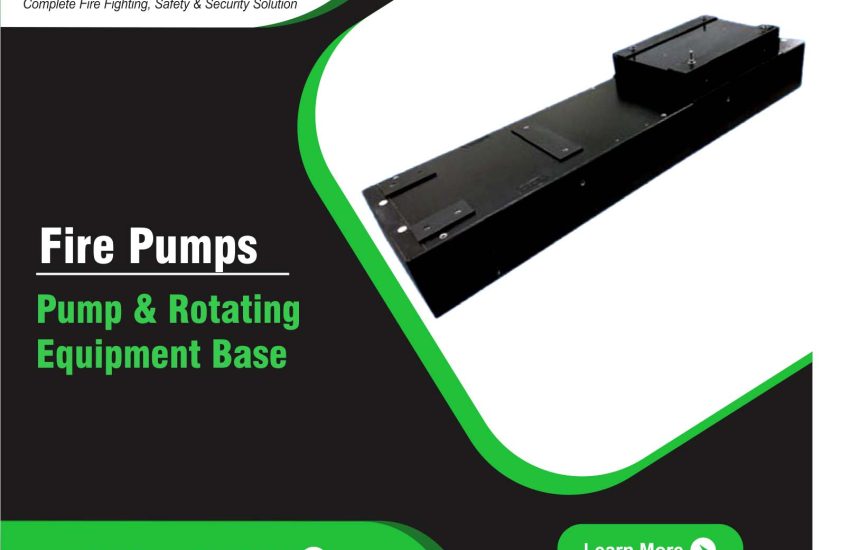Pump & Rotating Equipment Base are essential components in various industries, playing a crucial role in fluid handling, power generation, chemical processing, and more. These systems are designed to move fluids, gases, or other materials from one location to another while maintaining system efficiency. Understanding the pump specifications and the functioning of rotating equipment is essential for optimizing performance and ensuring reliability.
In this article, we will explore pumps and rotating equipment in detail, focusing on their specifications, types, and maintenance requirements to ensure smooth operations.
What are Pumps and Rotating Equipment?
Pumps are mechanical devices used to transport fluids (liquids, slurries, gases) by converting mechanical energy into hydraulic energy. Rotating equipment refers to machinery with moving parts that rotate, such as motors, compressors, and turbines, including pumps. These devices are essential in many industrial systems for fluid movement, energy generation, and material processing.
Types of Pumps
1. Centrifugal Pumps
Centrifugal pumps are one of the most common industrial pumps, used for transporting liquids through centrifugal force. These pumps consist of an impeller that spins within a casing to increase the fluid’s velocity, converting kinetic energy into pressure. They are widely used in water systems, HVAC systems, and chemical processing applications.
2. Positive Displacement Pumps
Unlike centrifugal pumps, positive displacement pumps move a fixed volume of fluid with each cycle, providing a steady flow of fluid regardless of changes in pressure. These pumps are ideal for viscous fluids or applications requiring constant flow rates, such as oil and gas or chemical processing industries.
3. Diaphragm Pumps
Diaphragm pumps are a type of positive displacement pump, commonly used for high-pressure applications. They use a diaphragm to move the fluid, offering precise control over the fluid flow, making them suitable for abrasive or corrosive liquids.
4. Gear Pumps
Gear pumps are positive displacement pumps that use rotating gears to move fluids. They are reliable for pumping high-viscosity liquids like oils, and are commonly used in lubrication systems, hydraulic systems, and chemical dosing applications.
Key Specifications of Pumps and Rotating Equipment
1. Pump Capacity
The capacity of a pump refers to the volume of fluid it can transport per unit of time, typically measured in liters per minute (LPM) or gallons per minute (GPM). It’s essential to match the pump capacity to the system’s needs to ensure efficient fluid flow.
2. Flow Rate
The flow rate refers to the volume of fluid passing through the pump per unit of time. It’s an important specification for selecting pumps based on the operational requirements of the system.
3. Pressure Rating
The pressure rating indicates the maximum pressure the pump can handle without failure. This specification is critical for systems operating under high-pressure conditions. It is crucial to choose pumps that match the required pressure specifications for smooth performance and longevity.
4. Power Consumption
Power consumption is another important specification, especially in energy-intensive applications. Pumps and rotating equipment consume a significant amount of energy, so selecting energy-efficient models helps reduce operational costs.
5. Efficiency
Pump efficiency is the ratio of the hydraulic energy output to the mechanical energy input. High-efficiency pumps ensure optimal fluid transport while minimizing energy loss, helping reduce overall energy consumption and operating costs.
6. Material Construction
The material construction of pumps and rotating equipment is crucial for ensuring durability and resistance to wear, corrosion, and high temperatures. Common materials used include stainless steel, cast iron, and carbon steel.
7. Rotational Speed
Rotational speed refers to the speed at which the pump impeller or rotating components move. The speed is measured in revolutions per minute (RPM). It is a critical specification that influences the pump’s performance and suitability for various applications.
8. Temperature Range
Each pump has a specified temperature range indicating the lowest and highest temperatures it can operate under without damage. Pumps in industries dealing with high-temperature fluids must be selected accordingly.
9. Vibration Levels
Excessive vibration can lead to premature wear and tear in rotating equipment. Monitoring vibration levels and selecting pumps with low vibration is essential for rotating equipment reliability and longevity.
Rotating Equipment Maintenance
Proper rotating equipment maintenance is vital for ensuring the reliability and efficiency of pumps, motors, compressors, and turbines. Neglecting maintenance can result in equipment failure, downtime, and increased repair costs.
1. Regular Inspections
Routine inspections of rotating equipment help identify potential issues such as vibration problems, leaks, or wear in critical components like bearings and seals. Early detection can prevent significant breakdowns and costly repairs.
2. Lubrication
Proper lubrication is essential for the smooth operation of rotating parts. Regularly lubricating bearings and other moving components reduces friction and wear, helping extend the equipment’s lifespan and improve its efficiency.
3. Monitoring System Performance
Using condition monitoring tools to track pump performance, vibrations, and temperature can help detect abnormalities early. This can include monitoring pressure and flow rates to ensure the pump operates within optimal parameters.
4. Cleaning and Debris Removal
Debris buildup can significantly affect the performance of pumps and rotating equipment. Regular cleaning and debris removal from the pump intake or other components can prevent clogs and improve overall efficiency.
5. Seal and Gasket Maintenance
Checking and replacing worn seals and gaskets can help prevent fluid leaks and maintain system integrity. This is especially important for pumps handling hazardous or corrosive fluids.
Conclusion
Pumps and rotating equipment are crucial components in various industrial systems, and understanding their specifications is key to optimizing performance. Whether you are choosing between centrifugal pumps, positive displacement pumps, or other types of pumps, selecting the right equipment with appropriate specifications like capacity, pressure rating, and material construction is essential for system efficiency and longevity.


